INDIAN PERSPECTIVE ON 6G LEADING TO A DATA DRIVEN ARCHITECTURE
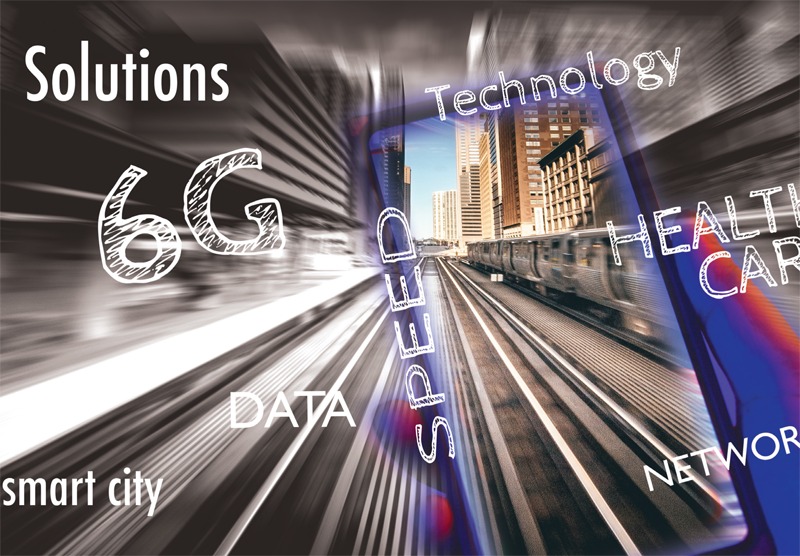 Satish Jamadagni, Reliance Jio Vinay Shrivastava, Reliance Jio Mahesh Nayaka Mysoreannaiah, Reliance Jio
Satish Jamadagni, Reliance Jio Vinay Shrivastava, Reliance Jio Mahesh Nayaka Mysoreannaiah, Reliance Jio
Abstract
5G deployments are underway across the globe and early discussions on 6G have already started. ITU is deliberating on the IMT 2030 requirements which is expected to be the basis for any 6G standard. Mobile data traffic has increased considerably during the last few years and as per an assessment by ITU, global mobile data traffic is expected to grow to 607 Exabytes (EBs) per month by 2025 and 5016 EB by 2030. Enterprises will be the big source of data generators going forward and support for enterprise/B2B application scenarios will be important in 6G. The 5G standards support “private networks” or “non-public networks” more as an after thought than as a primary requirement. Enterprise deployment options and architectural flexibility to address issues of private, public and hybrid deployments are critical for the success of any 6G standards.
6G will not just be about the bandwidth that can be provided but will have to address the way data is generated, processed, and consumed with an emphasis on the locality of data and data privacy in the overall architecture solution. In this paper we cover some of the emerging use cases for 6G and then provide a data driven architecture that can address the issue of data handling and provide an intelligence protocol for the emerging use cases.
Introduction
As 5G deployments are going strong across the world, discussions around what 6G have started. So far, we have seen multiple geographies announce 6G development programs, the Next G Alliance in the U.S. and Canada; Hexa-X, RISE-6G, and NEW-6G in Europe are a few examples. Japan, Korea, and China have also announced programs on 6G. The ITU-R has initiated work on developing a recommendation on vision for IMT 2030 and beyond ITU-R M. [IMT.VISION 2030 and BEYOND], intended to address the “Motivation on driving factors for future technology trends towards 2030 and beyond” and drive the direction of 6G technologies. In India, a Technology Innovation Group on 6G has been setup by DoT. In India, 6G standards development efforts are being led by TSDSI and the work on 6G was initiated with a workshop in January 2020. A technical study on use cases, requirements, and technologies for 6G is underway at TSDSI. It aims to establish use cases, KPIs for these requirements; technology trends including candidate technologies to address these KPIs, Network evolution, corresponding spectrum requirements and related aspects. TSDSI has also made an initial contribution to the ITU 6G Vision document.
TSDSI’s 6G vision focuses on 4 pillars - “Ubiquitous Intelligent Mobile Connected Society”, “Bridging the Digital Divide”, “Personalization and localization” and “data ownership segregation”. Some of the other emerging drivers are Security, trustworthiness, and sustainability.
The 4 key vision pillars outlined by TSDSI are the following:1. Any future technology should help in the development of a Ubiquitous Intelligent Mobile Connected Society.
2. Any future technology should support technologies that can help bridge the digital divide.
3. Any future technology should support technologies that can Personalize/localize services.
4. Any future technology should support the connectivity/compute technologies that can address issues of real-world data ownership sensitivities.
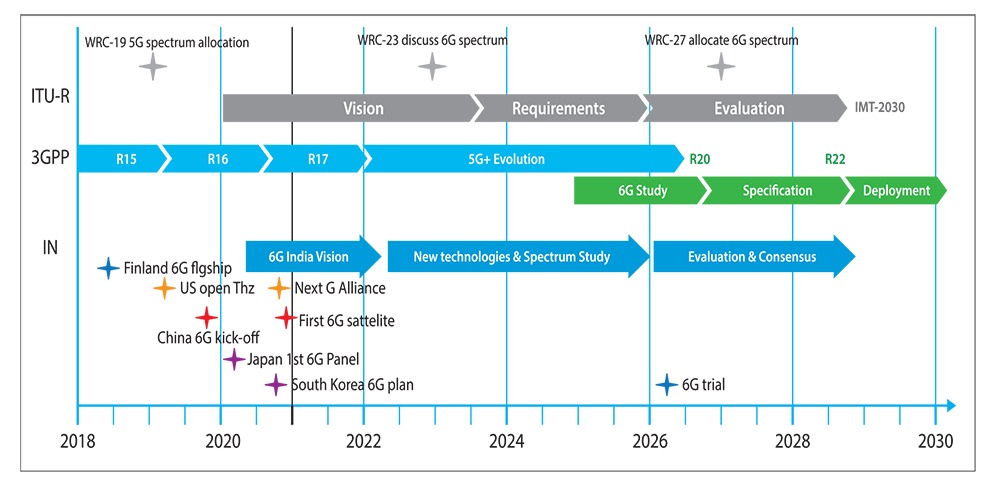
Figure 1: Timelines of IMT2030 and various research efforts
3GPP Release 18 defines the standardization related to 5G Advanced systems. 5G Advanced is expected to provide the directions for the 6G system. As per Ericsson industry projections 6G studies may start from 3GPP Rel 20 followed by 6G standardization in Rel 21.
Development of a Ubiquitous Intelligent Mobile Connected Society:a. It is anticipated that Public/Private/Enterprise networks, specialized networks (application/ vertical specific), IoT/sensor networks will increase in numbers in the coming years and could be based on multiple radio access technologies. Interoperability is one of the most significant challenges to enable a ubiquitous intelligent, connected/compute environment, where different networks, processes, applications, use cases and organizations are connected.
b. This includes supporting very high bandwidth requirements applications such as holographic communications, digital twins etc to supporting extremely low bandwidth requirement use cases such as sensors.
Support technologies that can bridge the digital divide (An important consideration for any future technology development)Future networks/technologies should support affordability as a key parameter and to that end support technologies such as
i. Highly composable networks/architectures to address issues of cost and affordability, incremental deployments.
ii. Support Spectrum Sharing/simultaneous spectrum use technologies which can lower the cost of initial spectrum purchase.
iii. Support for heterogeneous device types to bring the cost of affordability down without compromising high end usage scenarios.
iv. Energy efficiency to enable affordability and sustainability.
Support technologies that can Personalize/localize servicesa. As home network capabilities, edge device/network capabilities are enhanced, there is an opportunity to personalize services like never before.
b. AI is a critical technology, Local/hyperlocal data can lead to better use of AI across the telecom stack.
c. AI algorithms work better when more data is available to arrive at “specialization” which in turn leads to better “generalization” in the learning process.
d. “Specialization” is a set of concepts automatically extracted from a corpus of data, preferably from a “local or hyper local” context and this lends to a hierarchical network architecture, a “network of network” architecture.
Support technologies that can mimic real world data ownerships and hierarchiesa. Personal data protection is becoming important and as nations are focused on data protection and management.
b. It’s important that any future network/technology considers the intrinsic data hierarchies and management aspects.
c. Data ownership granularity spans from personal data, enterprise or group data, organizational data, data considered as national assets (data that is not allowed to leave the geographic boundaries).
Prominent 6G Use Cases under discussion:
Some of the possible deployment based scenarios are the following:
HeMBB (Hyper enhanced Mobile broadband): This use case covers possible scenarios where the AR/VR applications are streamed. This could also cater to the “Digital Twin” or holographic communication scenarios.
LDHMC (Long distance high-mobility communications): In large dimension networks, Long Distance and High Mobility Communications (LDHMC) are indispensable. Future transportation modes are envisioned to be travelling at much higher speeds than the current generation transport options. There are also deployment scenarios (like Satellite communications) where the base station itself would be moving at very high speeds compared to the UE.
eNTN (Enhanced Non terrestrial networks): Another trend in network topology evolution is the use of nonterrestrial network (NTN) components, e.g., satellite and HAPS, to provide coverage even in locations where there is no terrestrial network, as illustrated in Figure 2. As NTN components become widely deployed, investigation of technologies will proceed to improve the overall performance of communications involving NTN components and to provide tight integration of NTN components in overall operation of mobile communication systems.
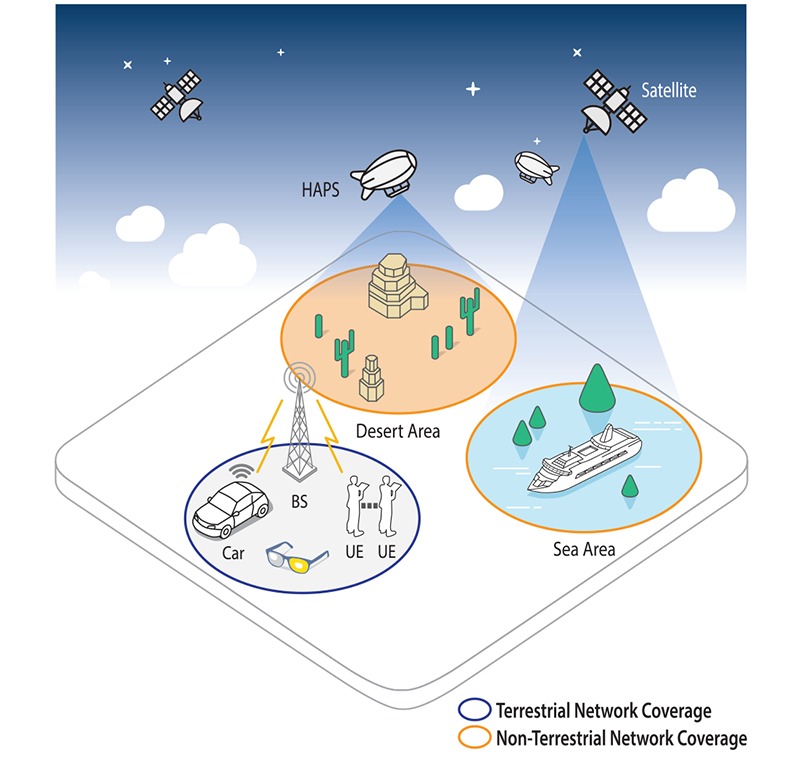
Figure 2: Inclusion of non-terrestrial Networks
HRC (Hyper Reliable Communication): 6G is envisioned to enable a class of services which will be marked as Hyper reliable to support mission critical services.
umMTC (Ultra massive machine type communication): An umMTC network always consists of massive communication devices, e.g., mobiles and sensors.
ELPC (Extremely Low Power Communications): Energyefficient wireless connectivity is expected to play an important role in scaling both battery-less and batterypowered Internet-of-Things (IoT) devices. uLLC (Ultra low latency communications): The ultra-low latency deployment scenarios imply an end-to-end latency of less than a millisecond. These would be required to enable services like Haptic internet, Industry 4.0, Timing as a service etc.
It should be noted that not all these services require high reliability (ex. Haptic internet, Gaming etc)
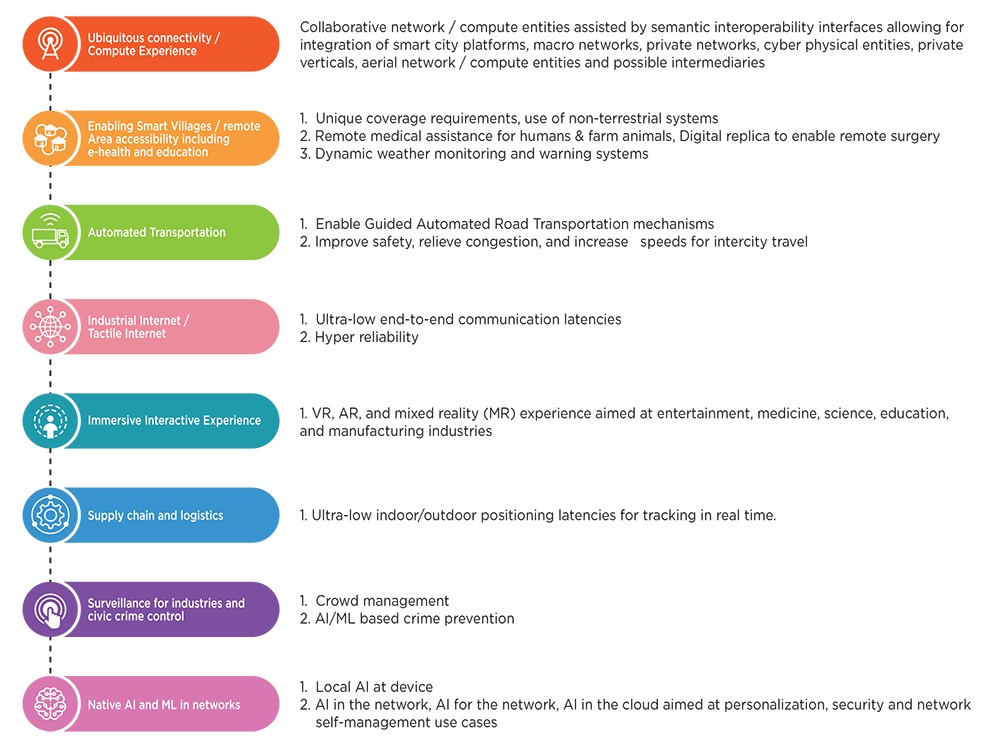
Figure 3. TSDSI identified Next Generation use cases
For any generation of technology, a few use cases will be the anchor point in the development of the technologies. We list the key technologies that could define 6G in the following:
Holographic Communication & Digital Replica:
A Hologram is a next generation media technology that can present gestures and facial expressions by means of a holographic display. The virtual representation reflects all the relevant dynamics, characteristics, critical components, and important properties of an original physical object throughout its life cycle. To provide a hologram display as a part of real-time services, extremely high data rate transmission, hundreds of times greater than the current 5G system will have to be supported.
For example, 19.1 Giga pixel requires 1 terabit of data transmission rate per second (Tbps). A hologram display over a mobile device (one micrometer pixel size on a 6.7-inch display, i.e., 11.1 Giga pixel) form-factor requires at least 0.58 Tbps. Moreover, support of a human-sized hologram significantly requires many pixels (e.g., requiring several Tbps). The peak data rate of 5G is 20 Gbps. 5G
cannot possibly support such an extremely large volume of data as required for hologram media in real- time. New data encoding techniques will of course take a part of the burden but the magnitude of throughput requirements for 6G should be clear with such a use case. The creation and update of Digital Replicas relies on the availability of sensory data while the control in either direction relies on the ultra-low latency and extremely reliable wireless control. It is anticipated that Digital Replicas can be used as a valuable tool to create novel and disruptive solutions, especially for vertical industries.
Combined Communication and Sensing:
Device localization has been around in 3GPP releases (introduced in Release 9 of the 3GPPP specifications) and is evolving over the releases. Wider bandwidth signals, Spectrum on the high-band and the use of mapping mechanisms for Simultaneous Localization can lead to the design of new localization techniques in future networks. High precision localization which could provide centimeter level accuracy will be important for factory floor applications and in this regard, Sensing (Involving RF Imaging, non-RF imaging and possible additional sensory inputs) is expected to help. Data fusion will be key to the realizing full sensing capabilities in a communication network.
Network/Platform Intelligence:
With the use of Artificial Intelligence (AI)/Machine Learning (ML) across the network elements and exposing granular data through the right interfaces, 6G networks are expected to impact not just the data processing capabilities within and outside the network but will also be able to provide AI/ML as a service to application/service platforms that work with the networks. This is expected to have impact in the way enterprise networks are deployed and used and the extent to which the network can assist in processing of the enterprise data. AI/ML is also expected to assist in the end-to-end network automation and orchestration which is a key point of concern for operators. The nature of the exposure functions that can be provided at the network edge would drastically change with the availability of levels of Meta data. In 6G we visualize a mix of “network of networks” approach, support for the right “data breakout” mechanisms and EDGE technologies to be supported. Operators understand that automation has the potential to reduce the total cost of ownership (especially in the operator’s radio access network) and increase roll out flexibility BUT automation has not been easy so far due to insufficient standards, proprietary solutions, interoperability concerns and other issues. Automation/Analytics enablement across a network design will be key for 6G and AI will be a key enabler.
AI will also be a key enabler for network security when it can be supported natively into the design. AI/ML will also be key in enhancing the air interface to address issues of “cognitive radios” or in the fusion of Communication/ Sensing. AI/ML is expected to also help in the design of new physical layers for 6G though the extent of native AI/ML in any physical layer design will have to be seen.
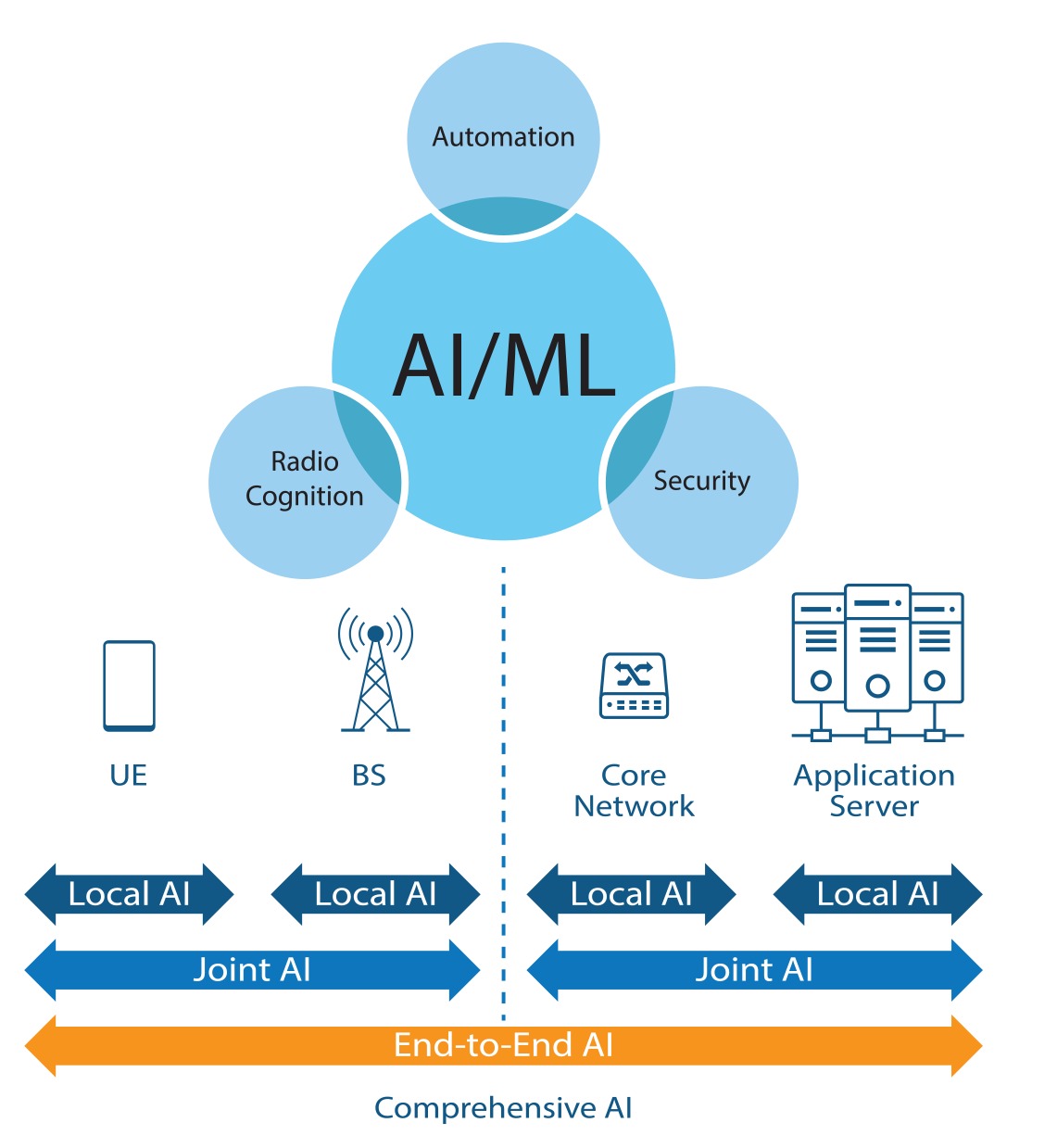
Figure 4. TSDSI vision of distributed AI
Source: TSDSI Technical Report “6G: Use cases, Requirements and Enabling Technologies” (TSDSI TR 6017 V1.0.0) - Figure 3.9
Other use cases and applications that are under discussion for 6G are more of a continuation from the 5G specifications. Two prominent use cases that will continue to evolve into 6G are the
“non terrestrial networks” and the “Unmanned Aerial Vehicles (UAVs)”.The large-scale use of unmanned aerial vehicles (UAVs) is expected evolve beyond 5G and in 6G wireless networks with the possibility of the arrival of personal drones. Native support in cellular networks for massive deployment of UAVs will require reliable, secure, and costeffective connectivity. UAVs and airspace control require strict governance of their operations (flight plans and tight orchestration of their position within the airspace) and governments have shown concern in scenarios that involves having large numbers of UAVs flying around without robust position tracking mechanisms. This would mean that closer integration of communication systems and system handling drone or UAV air traffic management (referred to as the UAV Traffic Management (UTM)) will be necessary in 6G networks. The UTM itself could be a federation of systems authorized to track UAV traffic. Using network intelligence for UTM will also be a key issue to handle when 6G networks are designed. UAVs will also be critical in “on demand” deployment scenarios and in 6G support for aerial base stations and the usage of UAVs for IoT application scenarios will also be in focus.
Non-Terrestrial Networks (NTN) was introduced in 3GPP Rel. 17 as part of the 5G specifications. It is expected to evolve further in 6G systems (beyond 3GPP Rel. 20). NTNs in 6G is expected to be a multi band multi-layer network where the NTNs are composed not only of satellites but will also consist of High-Altitude Platform Systems (HAPS), drones, and UAVs. Each of these NTN nodes can be connected further by other NTN nodes which could be intra-orbit and/or inter-orbit elements. Such connectivity amongst the NTN nodes or elements would be dictated by the specific platform type of the flying node and characteristics and benefits provided to the global network. Such NTNs are also expected to support Multicast and Broadcast Service (MBS) as a key service.
A data driven approach to 6G Architecture
Motivation
Deriving from the TSDSI vision statements, when we look at two of the critical issues from the Indian context, namely the issue of “Support technologies that can Personalize/localize services” and “Support technologies that can mimic real world data ownerships and hierarchies” one realizes that both are data centric. As home network capabilities, edge device/network capabilities are enhanced, there is an opportunity to personalize services like never before. Personal data protection is also becoming important and as nations are focused on data protection and management, It’s important that any future network/technology takes into account the intrinsic data hierarchies and management aspects. Data ownership granularity spans from personal data, enterprise or group data, organizational data, data considered as national assets (data that is not allowed to leave the geographic boundaries).
A critical enabling technology for achieving most of the above will be by embedding “intelligence” across the network stack. By Intelligence we mean the use of "Artificial Intelligence" or AI which include reasoning, knowledge representation, learning, perception etc for stated objectives. AI relies on the timely availability, quality, and integrity of data. More the data better it is as data always needs to be analyzed in a context. The ability to analyze the data from a small locality or at hyper local levels always works better for “intelligence engines” to arrive at inferences through what is termed as “specialization” which contrasts with “generalization” which is extrapolation to a larger context. As an example, behavioral patterns of a person can be better inferred by analyzing the local context. This is critical to achieve AI enabled networking for 6G to cater to use cases of personalization and data protection.
Local/hyperlocal data can lead to better use of AI across the telecom stack. AI algorithms work better when more data is available to arrive at “specialization” which in turn leads to better “generalization” in the learning process. “Specialization” is a set of concepts automatically extracted from a corpus of data, preferably providing “local or hyper local” context. Generalization/specialization relation lead to better construction of a hierarchy in the available data and thus mapping to a better network model.
In the Indian context the concept of “local or hyper local” has a greater significance due to the demography. The India demography, marked by diversities spanning language, food, culture, literacy and ability to access digital tools– is a very important influencing factor while designing and planning service offerings over digital channels. As an example, 1652 languages were recognized in the India as per the 1971 census as mother tongue for Indians. The sheer diversity of cuisines across regions- communities and families is simply staggering. Each region has its own distinctive culinary characteristics and dishes that are prepared in a unique “family tradition style”.
How does this impact a 6G network design you ask? The idea is to design a network built to serve local/hyper local requirements and then draw a larger network of networks. This “localized network” approach is the exact opposite of the conventional centralized core hub and spoke framework. Why a “Network of Networks” (NoN) approach for 6G? local or hyper-Local Data embedded well into the access network could change the nature of what we term as network intelligence. It would help in improving local search optimizations from data insights and by providing faster and dynamic updates in services such as maps, local data consumption models leading to the deployment of better coverage mechanisms, assist in local/hyperlocal broadcast technologies with the possibility of monetizing through such mechanisms as super targeted advertisements.
Hyper-local data also promises to bring in better optimizations in MIMO technologies (targeted Beam forming), could help better use of technologies such as Intelligent Reflective Surfaces (IRS) etc leading to a refined user experience. It must be noticed that a broader “NoN” trend is in some sense already underway through “private network deployments” but that is still in its infancy. Indian demography (food, Language etc) leads to an emphasis on “local and hyper local” data/contexts.
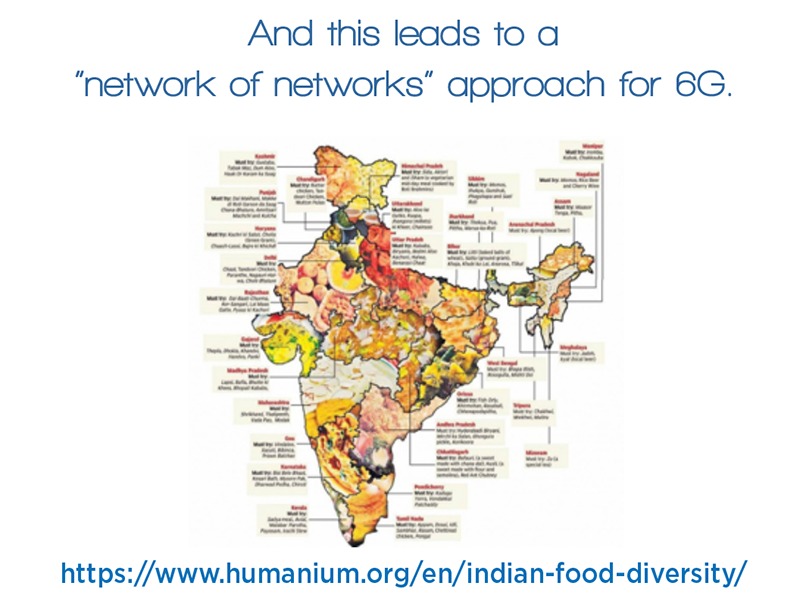
Redesigning 6G Network architecture
Network design for 6G will have to consider decomposition of the overall system into platforms, functions, orchestration elements and specialization network elements.
The network platform will have to be open, scalable, secure, be distributed system dictated by the nature of data flow hierarchies. Functionally, the RAN elements will be expected to support select Core functionality to make them independent and be able to support “Coreless operations”. Support for Coreless operations will be critical to support mobile base stations that are located on whether UAVs or other mobility platforms. This also reduced architectural complexity as a typical RAN node can operate independently but use the services of core networks when necessary.
Essentially the system will be composed of independent RAN entities or cluster of RAN entities that can function in an independent manner and connect to the core network when necessary. Each RAN entity can be seen as a sub-network and the dynamic interworking and instantiation of sub-networks will drive the system level integration. The orchestration architecture will have to be again decomposed into granular entities and the overall architecture will have to support open provision of services and the monetization of resources. To capture local and specialized network and sub network needs, 6G network-of-networks will cover multiple scales of – physical and virtual – networks.
The below diagrams provide the proposed over all granular architecture of the overall system.
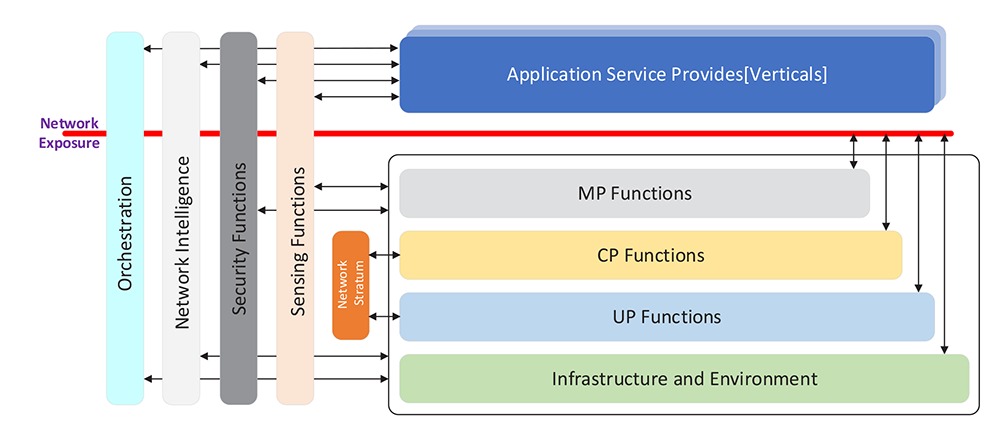
Figure: 5-A, granular view of a 6G node (Many such entities will form a deployed system)
In a network of network approach, the above figure will be BUT one node and many such independent nodes would be deployed in an interworking/inter connected manner. Each element would have an independent security function, sensing function, network intelligence/ orchestration elements and the radio stack involving the full User Plane (UP) function, Control Plane (CP) function and the Management Plane (MP) function. Multiple such nodes shall inter connect to form deployments that can cover private and public (wide area) coverage scenarios as shown in the below figure.
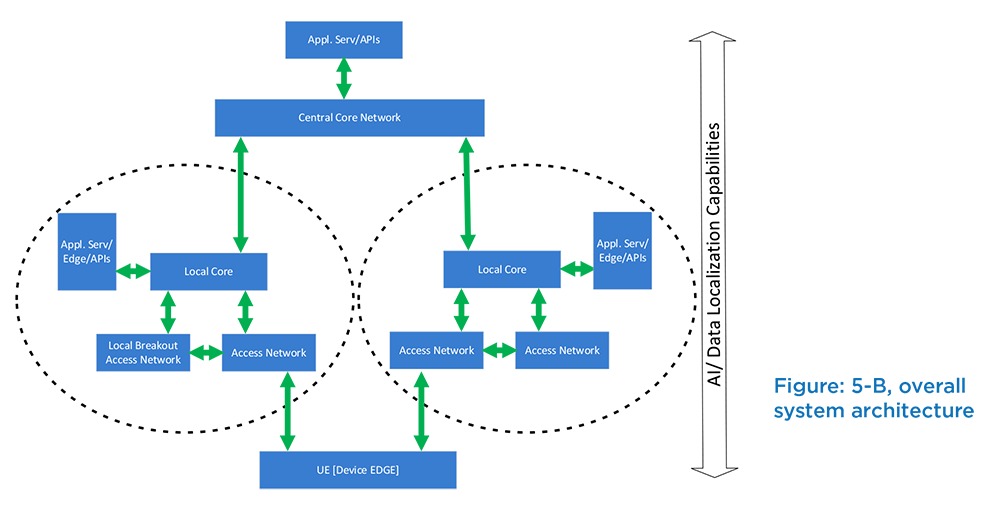
Any future 6G network design should support multiple levels of EDGE or data hierarchies and data breakout points to cater to multiple private network deployment scenarios. Also each of these individual nodes of deployments could support independent radio access technologies as well (some could be broadcast nodes ONLY, some could be IoT nodes ONLY and some could be public/private access nodes only).
In such a distributed deployment architecture scenario, the key challenge will be in developing the management hierarchies covering distributed orchestration mechanisms as well as in designing distributed network intelligence mechanisms.
Conclusions
While 5G design is motivated by providing mobile broadband access, 6G is expected to focus and provide network access to a variety of heterogeneous devices with smart phone being one of the supported device types. From a network perspective, B2B business model is expected to emerge as the primary model unlike 5G which is still largely based on B2C model for the operators by providing SIMs to its customers. Moreover, the network will not be pure data pipe, rather it will have its own intelligence and processing power to process a subset of the data enabled by native AI/ML support in the networks. To encourage the changing business models, alleviate monetization challenges faced by operators and meet the expectations of new end user scenarios by 6G, one central theme that emerges is the emphasis on the network architecture which should be distributed and hierarchical with computing as a native part of the network. This is likely to emerge as the central theme for 6G while the other enhancements such as further reduced latencies, further enhancements in throughputs etc. are investigated.
6G will not just be about the bandwidth that can be provided but will have to address the way data is generated, processed, and consumed with an emphasis on the locality of data and data privacy in the overall architecture solution. In this paper we cover some of the emerging use cases for 6G and then provide a data driven architecture that can address the issue of data handling and provide an intelligence protocol for the emerging use cases. Understanding the Indian demography leads to an emphasis on “local and hyper local” contexts and the preference to use a “network of networks” approach in designing 6G. A network of networks can be a combination of multiple ownerships across data, spectrum, network types and assets, use case providers, application providers in an open disaggregated manner.
R E F E R E N C E S1. ITU-R Report, Document M.2370-0, “IMT Traffic estimates for the years 2020 to 2030”, July 2015.
2. TSDSI Technical Report, Document TR 6017,”6G Use cases, Requirements and Enabling Technologies”, July 2022.
3. Document 5D/TEMP/320, Draft working document towards a preliminary draft new Report ITU-R M.[IMT.FUTURE TECHNOLOGY TRENDS OF TERRESTRIAL IMT SYSTEMS TOWARDS 2030 AND BEYOND]
4. Document 5D/TEMP/273, [Draft] detailed workplan for the development of preliminary draft new Recommendation ITU-R M.[IMT. VISION 2030 AND BEYOND]
5. TSDSI-SGN-NIP235-V3.0.0-20200918, Proposal for study on use cases, requirements and technologies towards 6G.










